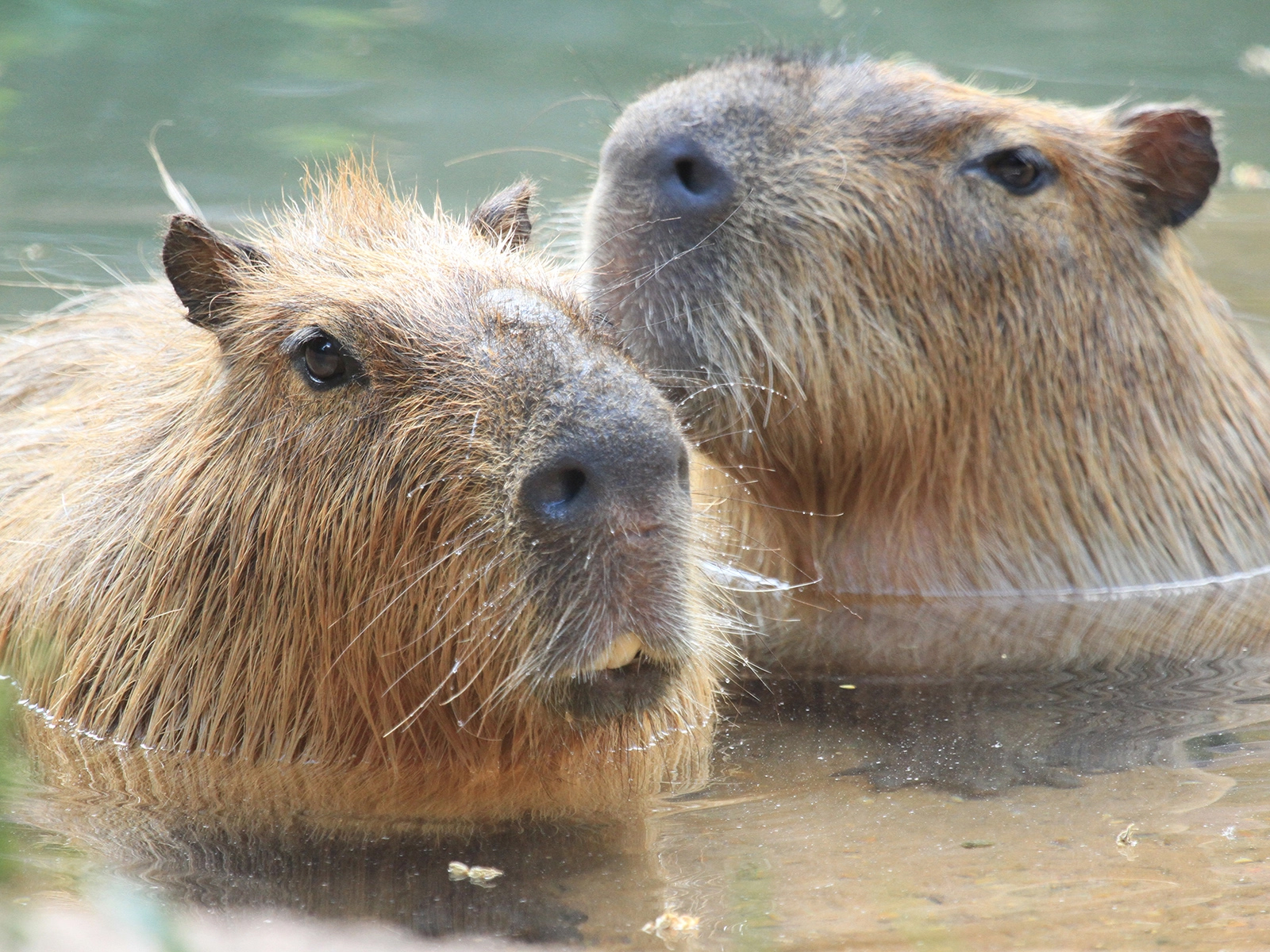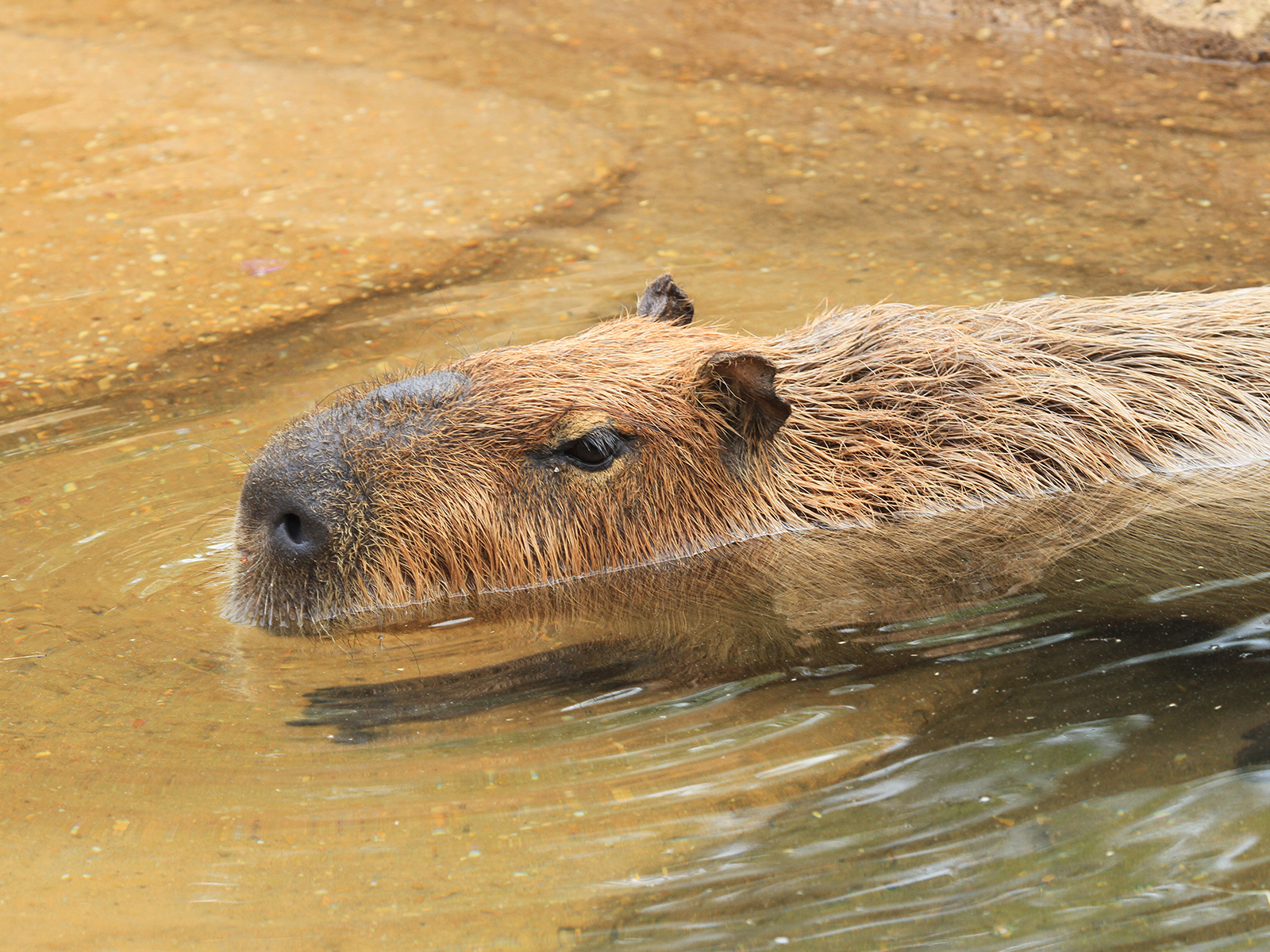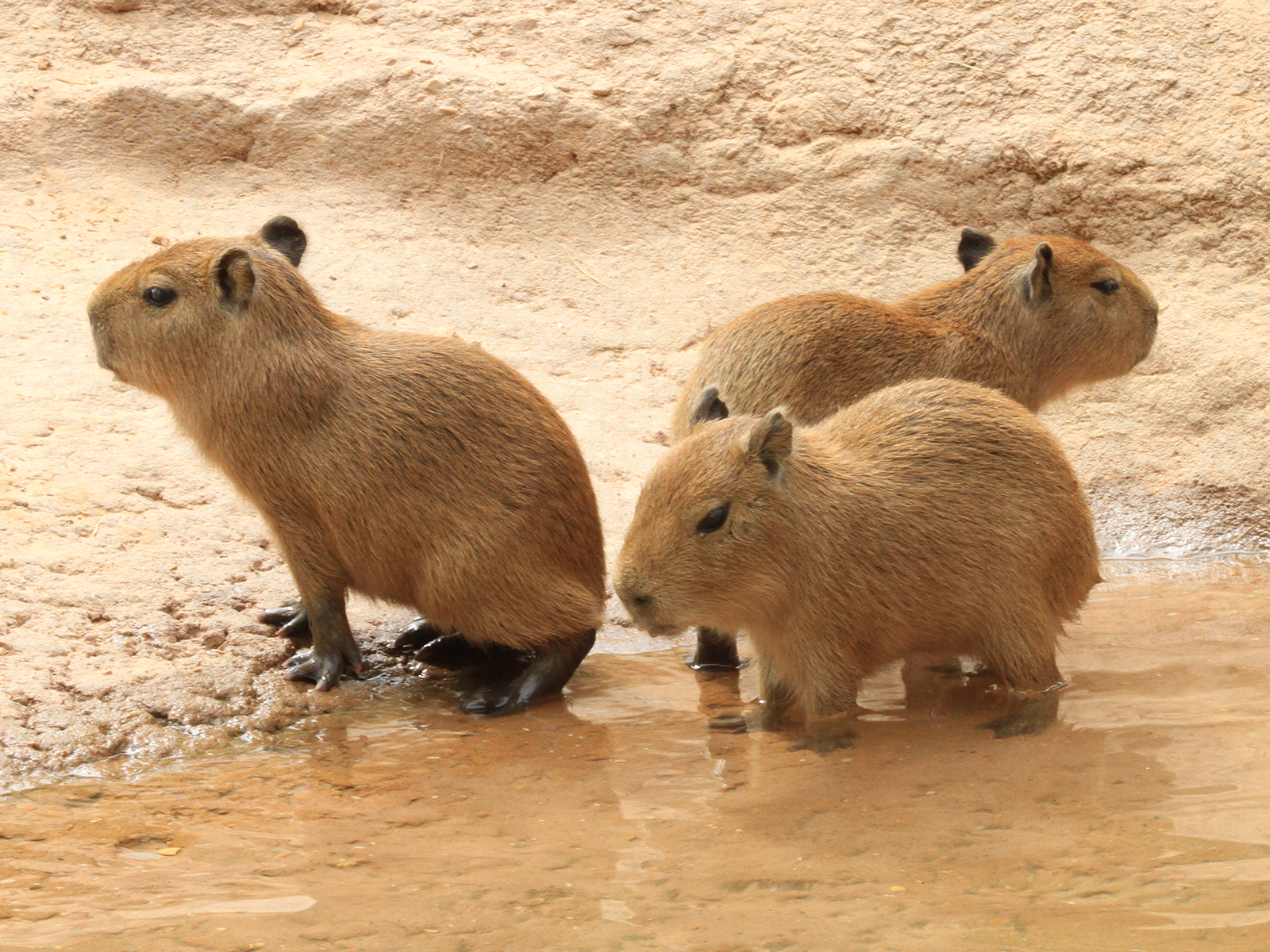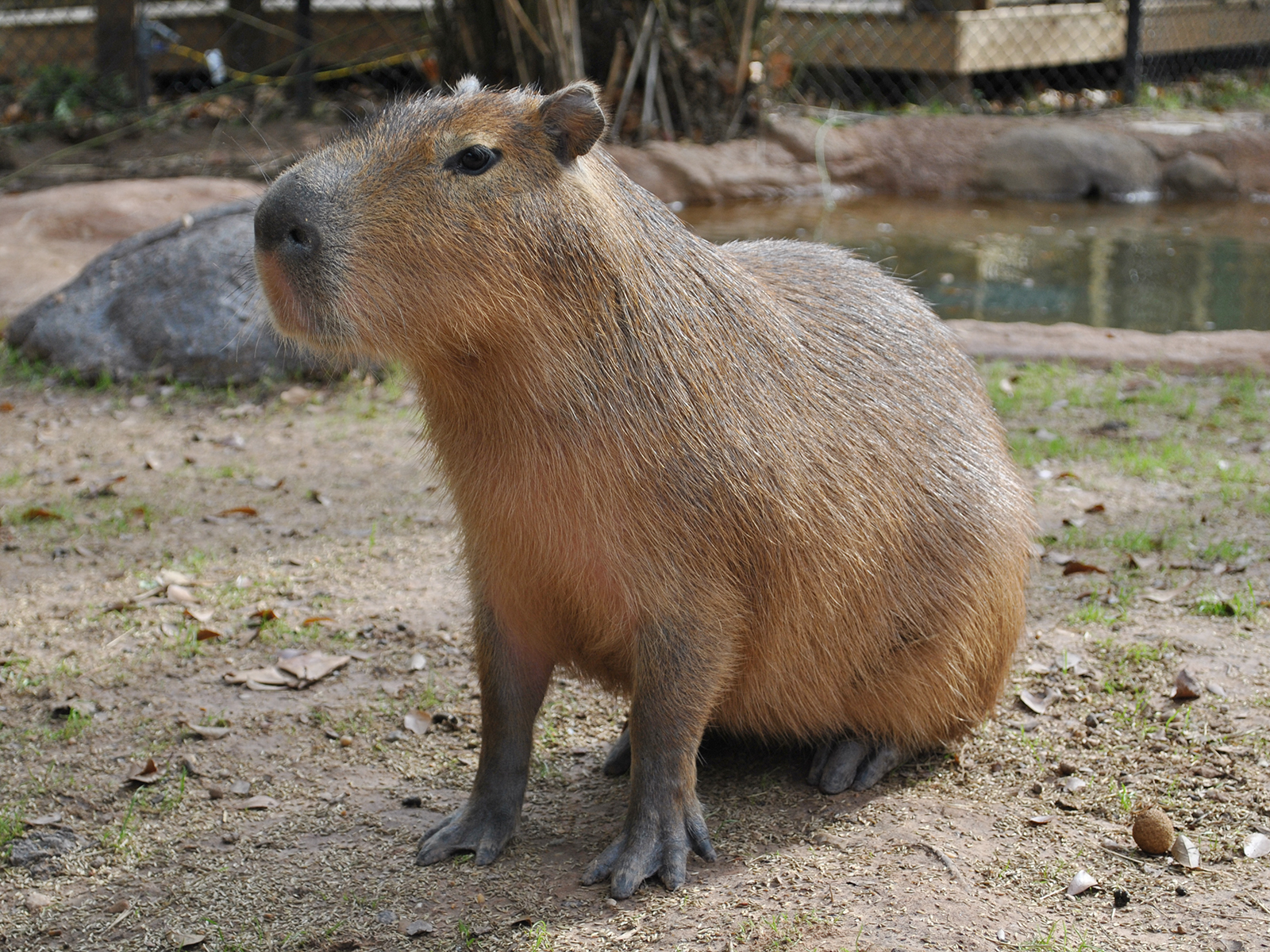Capybara
Hydrochaeris hydrochaeris
Class
Mammalia
Order
Rodentia
Family
Caviidae

Mammalia
Rodentia
Caviidae
Central and South America
Height: 2 ft at shoulder
Weight: 80-150 lbs
Dense vegetation surrounding lakes, rivers, swamps, marshes, and ponds
1 - 7 pups
Gestation: 5 - 6 months
Mainly grasses and aquatic plants
Least Concern
Like all rodents, capybara's two front teeth continuously grow throughout their life.

The capybara's eyes, nostrils and ears are located near the top of the head, an adaptation for their semi-aquatic life. They are excellent divers and swimmers with partially webbed toes.
Water is essential for capybaras. They not only eat the plants and grasses found in aquatic habitats but also rely on the water to escape predators. It can stay underwater for up to five minutes without taking a breath and can sleep underwater with its nose poking out above the waterline.

Capybaras usually live in small groups of about 10 individuals, made up of a dominant male, one or more females, one or more subordinate males, and several young.
Capybara pups weigh 2 - 3 lbs. at birth. They reach maturity around 15 months old.

In addition to facing natural predators like the jaguar, adult capybaras are also hunted by humans. Capybara populations are considered stable through much of their range, but hunting in some areas has reduced their numbers.